Every Moment is Precious – Take Advantage of What the World Can Offer
After three glorious weeks in Southern India, surrounded by nature, soaking up the lush vegetation, hearing the sounds of the birds, insects and even early morning growls of tigers, I had no desire to visit Bombay, and be startled by automobile honks and encroachment of skyscrapers.
Bombay is the largest city in India, with more than 20 million residents. No one knows its size for sure, given the many squatters and constant influx of people from rural areas. Some say it’s the third most populated city in the world, and I easily got in the groove of sharing narrow roadways with elephants, cows, goats and dogs along with colorful tuk tuk rickshaws.

I had a forced layover in Bombay, between 5:00 p.m. and 3:00 a.m. Whoever schedules these crazy aviation paths, or at least my 48-hour six city routing, must be overdosing on psychedelic drugs. I figured I’d just hang out at the airport and read, despite the horrendous remarks I’d read online about the Mumbai airport. The postings gave me angst about even using the restroom at the airport, and it’s pretty hard to avoid during ten hours.
As soon as my plane landed, I admonished myself for not using the in-flight lavatory. After de-boarding, I bee lined to the Mumbai airport ladies room and found it large, modern and with more western amenities (like toilet paper) than most the restrooms I’d been in throughout India. What’s more, the stench people wrote about in the travel commentaries was replaced by the smell of cleaning fluids as I watched a washer woman pour about a liter from a jug into half the bathroom stalls and scrub away.
Beyond the bathroom, the entire airport looked like a typical modern airport. This one, however, rather than having a rapid transit system to connect the terminals, had a complimentary bus transfer service between the international and domestic airports, which sit about ten kilometers apart. Word has it that the street side journey can take more than half an hour, depending on traffic. The airport provided ride cuts runs along the tarmac, so the ride is comfortable, simple and short.
I spent all my extra rupees at an inspirational Mahatma Gandhi gift shop, “The Peace Initiative,” located by the security checkpoint. A CD of traditional Indian bhajans with narration by Gandhi’s grandson cost only six dollars. Almost every item for sale here either carried an image of the skin and bones Mahatma (meaning Great Leader) with his walking staff, or the ahimsa (non-violence) credo.
Another amenity offered by the Mumbai airport, which is rare nowadays, is a luggage storage service. It was fairly simple, inexpensive, and presumably safe. So with my lightened load, I took a pre-paid taxi to International Society for Krishna Consciousness (ISKCON), a Krishna temple a Bombay resident suggested I visit.
While most Hindu temples in India are exquisite, this is exceptional in that it has a museum-like welcoming and informative air.
You first pass through airport style security screeners, and store your shoes in cubby holes. Inside the impressive temple complex are dioramas about Krishna with descriptors written on the wall in English along with the language of the locals. There is also information and life sized images honoring Srila Prabupada, the departed founder and spiritual leader of ISKCON. Srila Prabupada had immense faith. He was sent to the United States with just seven dollars in his pocket when he was nearing 80 years old. He arrived by boat, after suffering several heart attacks on the long ride. Despite his first few nearly impossible years in New York City, he singlehandedly brought about a major change in thinking among hundreds of thousands of westerners, including George Harrison of the Beatles.
Close by one of the statues of Prabupada, in a palatial open aired setting, there is a lecture taking place, translated to English by an American swami dressed in a traditional saffron colored robe. He talks about the unseen hand of God. “They don’t know it’s Krishna steering them.” They just think things are all a coincidence, he explains.
Listening to the lecture, you periodically hear the bells ring as a priest lights candles in an altar. While men and women are sit in separate groups on the floor to listen to the swami’s talk, a few men periodically make their way between the two gatherings to prostrate themselves, touch a garland and kiss their hand.
There is a stand inside the temple where they are selling hard back editions of the Bhagavad Gita (Hindu’s Holy Scriptures) for a remarkably low cost of only two dollars. If the book were thinner, or my backpack larger, I would purchase multiple editions. ISKCON has many charitable endeavors worldwide, and tonight they are asking for donations to provide Bhagavad Gita copies for a reform program they have for prisoners.
There are plenty more inspirational books in an area that reminds me of the lower level at the United Nations Building in New York City, where visitors can purchase a wide variety of items with special meanings as mementos.
Among the books for sale are two by Radhanath Swami, an American who now spends much time at the Bombay center. Both his books are outstanding. One talks about his personal journey as a typical spoiled suburban college freshman in the ‘60s looking for fun, adventure and some experimental drugs in Europe one summer. Somewhere along the way, this somewhat spoiled suburbanite knew his life had to be different. He split from his close friend who was headed to Israel, and made his way through disease and war-torn regions to the caves and rivers of the Himalayas, with nothing but the meager clothes on his body. Now a leading spiritual master at ISKCON, Radhanath Swami has met with President Obama, and recently spoke at the British House of Commons.
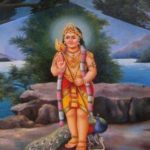
Beyond prasadam, there are also vendors selling an incredible variety of delectable sweets, some puris and samosas. I sample a dal farsan puff for 10 rupees (20 cents). It’s so good, I buy another.
Not unlike the U.N., this is a complex. Behind the temple is a guest house and ashram. While most ashrams are austere, the lobby here is very inviting and at 2,500 rupees a night for a single room without air conditioning, I expect these rooms to be quite comfortable.
Set in a high rent, somewhat exclusive district, ISKCON is just a three-block walk to Juhu beach. Once there, you can walk endlessly, in either direction along the oceanfront sand. Late at night, all seems peaceful. There are a few couples, a few female friends gathered, lots of families, and countless young men enjoying the cool breeze and the sound of the Indian Ocean’s waves. Kiosks and carts are set up to sell tea, coffee, fruit and roasted corn on the cob.
The only thing missing this night are the mosquitoes, making this a perfect night out in Bombay.
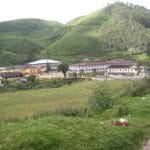
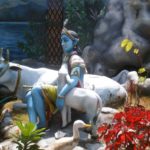
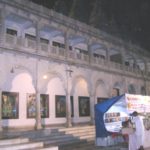
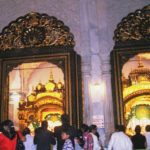
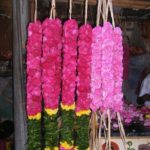
wao.. I got transported in this post.. Great job Deborah and thanks for sharing your experiences!
Your blog has really piqued my interest on this topic. Feel free to drop by my website 59N about Entrepreneurs.
Can you be more specific about the content of your article? After reading it, I still have some doubts. Hope you can help me. https://accounts.binance.com/cs/register?ref=S5H7X3LP